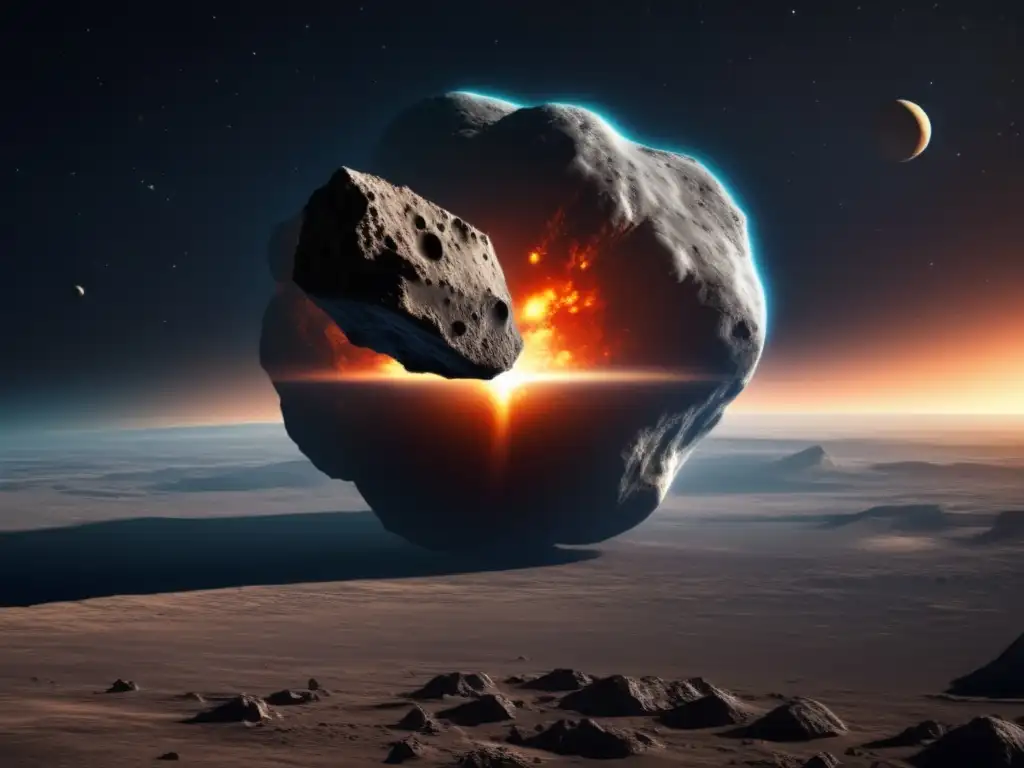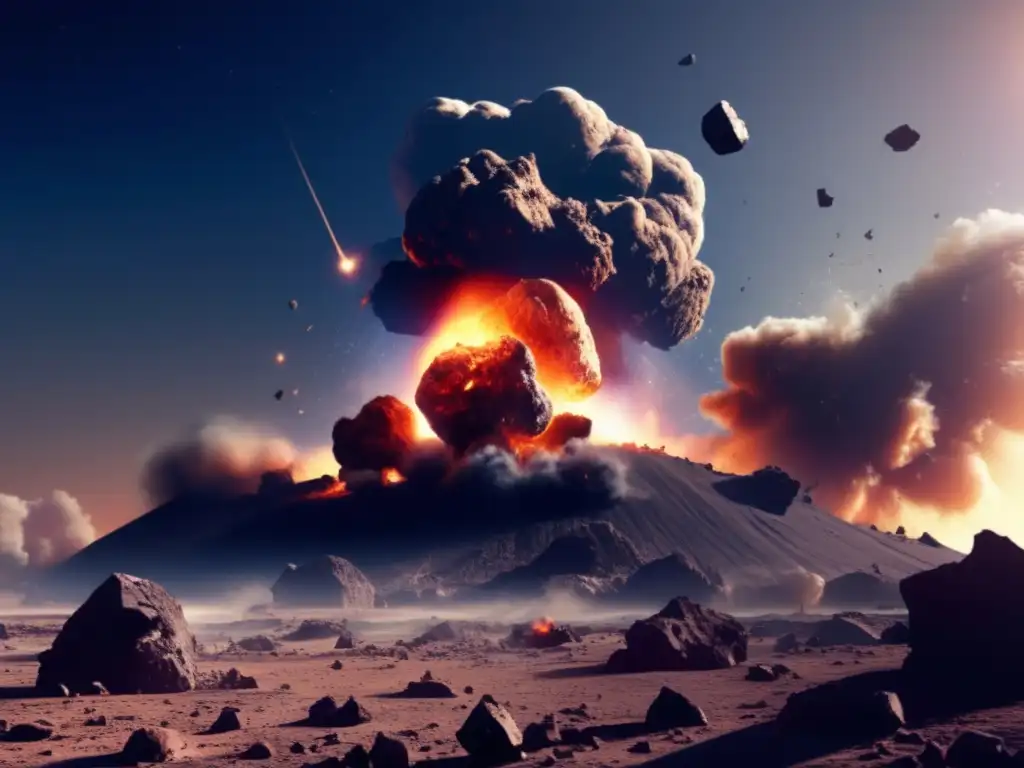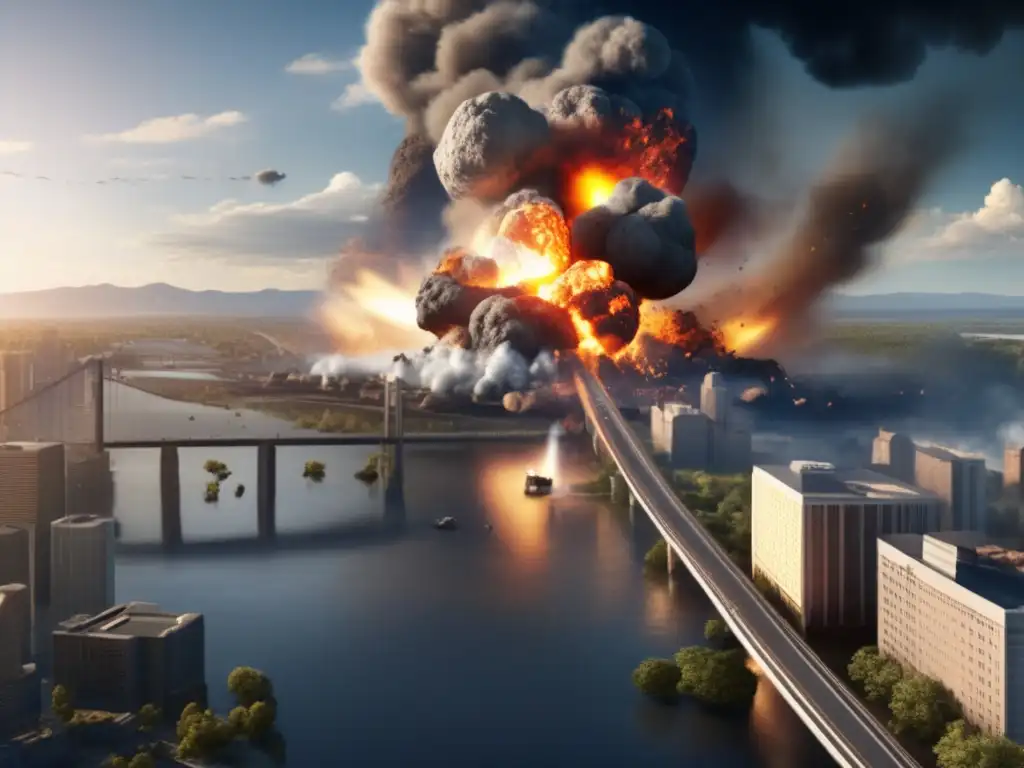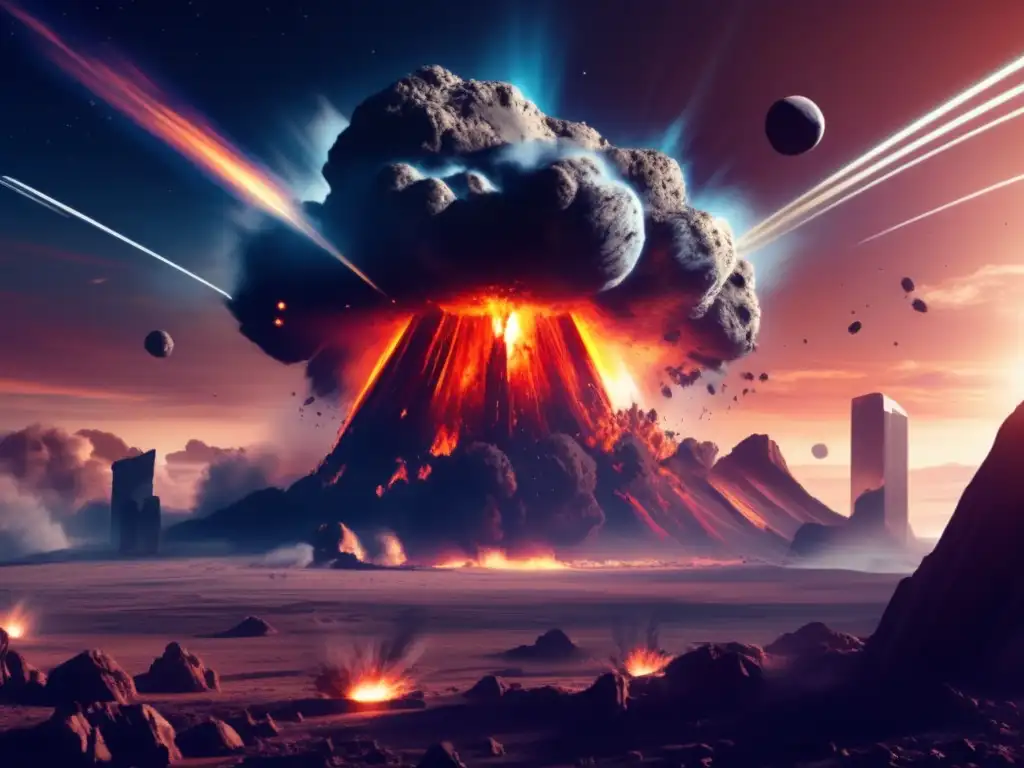When Sky Falls: The Effects Of Asteroid Impacts

Introduction
Asteroids are fascinating celestial bodies with the potential to cause catastrophic destruction on planet Earth. An asteroid impact can have a wide range of effects, from local devastation to global extinction-level events. In this article, we will explore the effects of asteroid impacts and their significance to our planet and its inhabitants.
Types of Asteroid Impacts

Impact Craters
One of the most visible signs of asteroid impacts is the formation of impact craters. These are bowl-shaped depressions formed when an asteroid crashes into the surface of a planet or moon. The size of the crater depends on the size and speed of the asteroid, as well as the nature of the target material. Small asteroids will leave small craters, while larger ones will create more significant impact sites. Impact craters are found on all of the rocky planets in our solar system, including Earth, Mars, and the Moon.
Tsunamis
An asteroid impact in the ocean can create massive tsunamis that can devastate coastal regions. The impact generates enormous waves that travel across the ocean, creating widespread destruction. The size and velocity of the tsunami depend on the size of the asteroid and the depth of the water at the impact site.
Atmospheric Effects
The atmospheric effects of an asteroid impact can be equally devastating. The impact creates a massive shock wave that radiates outward from the impact site. This shockwave can cause widespread damage and destruction, even hundreds of miles away from the impact site. The shockwave can also generate massive fireballs that can cause extensive wildfires.
The Extinction of Dinosaurs

The Chicxulub Impact
The impact of an asteroid is believed to have caused the extinction of the dinosaurs. The Chicxulub impact occurred around 66 million years ago when a large asteroid, estimated to be around 10 kilometers in diameter, crashed into what is now the Yucatan Peninsula of Mexico. The impact created a crater over 180 kilometers wide and 20 kilometers deep. The impact generated massive tsunamis and a global firestorm that caused an immediate loss of life. The massive dust and debris cloud that was kicked up by the impact caused a significant drop in temperature and sunlight, leading to a prolonged period of darkness and cold.
The End Cretaceous Extinction
The Chicxulub impact is widely believed to have caused the end-Cretaceous extinction event that wiped out more than 75 percent of all species on Earth at the time, including all non-avian dinosaurs. The impact resulted in massive climate change, with temperatures dropping up to 30 degrees Celsius globally, and the release of toxic gases from the impact site.
Asteroid Impact Preparedness

Early Warning Systems
It is essential to have systems in place to detect and track asteroids that may pose a potential threat to our planet. Early warning systems can provide crucial information about the size, speed, and trajectory of an asteroid, allowing for effective mitigation strategies. Several organizations, including NASA and the European Space Agency, are actively working on developing early warning systems to protect our planet from asteroids.
Mitigation Strategies
Several mitigation strategies have been proposed to reduce the impact of a potential asteroid impact. One method is to deflect the asteroid's trajectory away from Earth using a spacecraft. Other methods include using explosives or nuclear devices to disintegrate the asteroid or drilling into the asteroid to divert its path.
Frequently Asked Questions

-
What is an asteroid impact?
An asteroid impact occurs when an asteroid collides with a planet or moon, causing widespread destruction and devastation.
-
What are impact craters?
Impact craters are bowl-shaped depressions formed when an asteroid crashes into the surface of a planet or moon.
-
How can an asteroid impact be prepared for?
Early warning systems and mitigation strategies can be put in place to reduce the impact of a potential asteroid impact.
-
What was the Chicxulub impact?
The Chicxulub impact was an asteroid collision believed to have caused the extinction of the dinosaurs.
-
What are some mitigation strategies for asteroid impacts?
Some mitigation strategies include deflecting the asteroid's trajectory, using explosives or nuclear devices, or drilling into the asteroid to divert its path.
Conclusion
Asteroid impacts have been responsible for some of the most significant events in the history of our planet, including the extinction of the dinosaurs. It is essential that we continue to study and understand these celestial bodies to be better prepared for potential threats. Early warning systems and mitigation strategies can significantly reduce the impact of a potential asteroid impact. By learning about these events and how to protect ourselves and our planet, we can ensure our survival and make informed decisions about our future.
Additional Resources

For more information on asteroid impacts, visit:
 Asteroids And Earth: A Violent Relationship
Asteroids And Earth: A Violent Relationship The Day The Sky Burned: Documenting Asteroid Impacts
The Day The Sky Burned: Documenting Asteroid Impacts Surviving The Impact: Life After Asteroid Strikes
Surviving The Impact: Life After Asteroid StrikesIf you want to discover more articles similar to When Sky Falls: The Effects Of Asteroid Impacts, you can visit the Asteroid Impacts category.
Leave a Reply

Articulos relacionados: